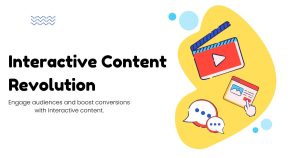Beyond the Click: The Power of Emotional Marketing

What makes a customer choose one brand over another? Is it the price, the features, or something deeper? While logic and reason play a part in purchasing decisions, emotions are often the true driving force. People don’t just buy products; they buy feelings, experiences, and connections. This is the core principle of emotional marketing.
Emotional marketing is a strategy that aims to evoke specific feelings in an audience to build a stronger, more personal connection with a brand. Instead of just listing features and benefits, it tells a story, creates an experience, and taps into fundamental human desires like happiness, belonging, and security. By forging these emotional bonds, brands can cultivate a level of loyalty that transcends simple transactions.
Successful emotional marketing makes customers feel understood and valued. It shifts the focus from “What can this product do for me?” to “How does this brand make me feel?”. This connection can turn one-time buyers into lifelong advocates. In this guide, we’ll explore why emotional marketing is so effective and how you can implement it to build a brand that people not only buy from but truly love.
Why Does Emotional Marketing Work?
Our brains are wired for emotion. Neurological studies show that emotional responses are processed faster than rational thoughts, giving them a powerful influence over our decisions. When a brand successfully connects with us on an emotional level, it creates a memorable and lasting impression.
Think about some of the world’s most iconic brands. Nike doesn’t just sell athletic wear; it sells the feeling of achievement and determination with its “Just Do It” slogan. Coca-Cola doesn’t just sell a soft drink; it sells happiness and togetherness through its “Share a Coke” campaigns. These brands understand that emotions are the currency of connection.
The effectiveness of emotional marketing lies in its ability to:

- Build Trust: Emotional storytelling can make a brand feel more human and relatable. When customers feel a brand shares their values, they are more likely to trust it.
- Create Lasting Memories: Emotional experiences are more memorable than factual information. A powerful ad campaign that makes you laugh or cry will stick with you far longer than a list of product specs.
- Drive Loyalty: Customers who feel an emotional connection to a brand are more likely to remain loyal, even when presented with cheaper or more convenient alternatives. They become advocates, sharing their positive experiences with others.
- Influence Purchase Decisions: Studies have consistently shown that emotions play a significant role in purchasing behavior. A positive emotional response to a marketing campaign can directly translate into sales.
Key Emotions in Marketing
While there is a wide spectrum of human emotions, marketers typically focus on a few key feelings that are universally understood and highly motivating. Choosing the right emotion depends on your brand’s identity, your target audience, and the message you want to convey.

Happiness and Joy
Happiness is one of the most powerful and sought-after emotions. Brands that associate themselves with joy and positivity create an uplifting and appealing image. This approach is effective for products and services related to entertainment, food, and family.
- How to Use It: Use vibrant colors, upbeat music, and smiling faces in your campaigns. Share customer stories that highlight moments of happiness. Create content that is lighthearted, fun, and shareable.
Sadness and Empathy
While it may seem counterintuitive, evoking sadness can be a powerful way to foster connection and inspire action. Campaigns that tap into sadness often do so to raise awareness for important causes, encouraging empathy and a desire to help. This is a common strategy for non-profits and charities.
- How to Use It: Tell poignant stories that highlight a problem or a struggle. Use a somber tone and imagery to evoke empathy. Provide a clear call to action that offers a way for the audience to make a positive impact.
Fear and Surprise
Fear is a primal emotion that grabs attention. Marketers use fear to highlight potential risks or negative consequences that their product can help prevent. The key is to present a problem (the fear) and then immediately offer a solution (your product). Surprise works similarly by capturing attention unexpectedly.
- How to Use It: Use statistics or scenarios that illustrate a risk, such as home security systems showing the dangers of a break-in. For surprise, use unexpected plot twists in ads or reveal a surprising fact that challenges common beliefs.
Anger and Frustration
Tapping into anger can be risky, but when done correctly, it can be highly effective. This emotion is often used to rally people around a cause or against a common “enemy,” such as injustice, high prices, or poor service. It creates a sense of solidarity and shared purpose.
- How to Use It: Identify a common frustration that your audience experiences. Position your brand as the solution or as a champion for the consumer. Use bold, assertive language that empowers your audience.
Belonging and Community
Humans have an innate desire to belong. Brands that create a sense of community make their customers feel like part of an exclusive group. This fosters a deep sense of loyalty and identity.
- How to Use It: Create a membership program, a forum, or a social media group for your customers. Use language that emphasizes “we” and “us.” Host events and encourage user-generated content that showcases your community.
Crafting Your Emotional Marketing Strategy
Implementing an effective emotional marketing strategy requires careful planning and a deep understanding of your audience. Here are the steps to create campaigns that resonate on an emotional level.

1. Know Your Audience
Before you can evoke any emotions, you need to know who you’re talking to. What are their values, desires, and pain points? What motivates them? Use market research, surveys, and customer feedback to create detailed buyer personas. Understanding your audience’s emotional landscape is the foundation of a successful strategy.
2. Define Your Brand’s Emotional Identity
What emotion do you want your brand to “own”? Your choice should align with your brand’s core values and mission. Are you a brand that inspires confidence, provides comfort, or champions change? This emotional identity should be consistent across all your marketing channels.
3. Tell Authentic Stories
Storytelling is the most powerful tool in emotional marketing. Stories create context, build characters, and allow your audience to see themselves in the narrative. Whether it’s the story of your company’s founding, a customer’s success story, or a fictional narrative that reflects your brand’s values, make it authentic and relatable.
4. Create an Immersive Experience
Go beyond traditional advertising. Think about how you can create experiences that immerse your audience in your brand’s world. This could be through interactive content, live events, or creating a unique unboxing experience. The goal is to make your audience feel something, not just see something.
5. Be Consistent
Emotional branding is a long-term strategy. It’s not about a single tear-jerking ad. Every interaction a customer has with your brand—from your website to your customer service—should reinforce the emotional connection you’re trying to build. Consistency builds trust and makes your brand’s emotional identity feel genuine.
Transform Your Brand’s Connection
Emotional marketing is not about manipulation; it’s about connection. It’s about understanding that your customers are people, driven by the same complex emotions that drive us all. By creating marketing that speaks to the heart, you can build a brand that is not only successful but also meaningful.
Start by identifying the core emotion that aligns with your brand’s purpose. Then, weave that emotion into everything you do. Tell stories that resonate, create experiences that engage, and build a community that your customers will be proud to be a part of. When you make your customers feel something, they will remember you, they will trust you, and they will choose you, time and time again.





